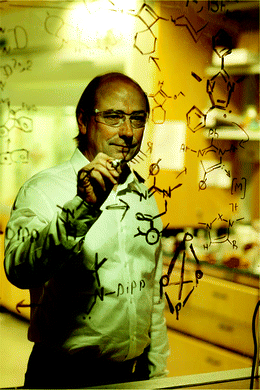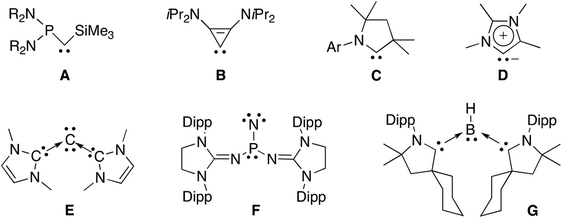DOI: 10.1039/C4QO90044H
(Profile)
Org. Chem. Front., 2015, 2, 19-20
Interview with Guy Bertrand
UCSD/CNRS Joint Research Chemistry Laboratory, Department of Chemistry and Biochemistry, University of California, San Diego, USA. E-mail: guybertrand@ucsd.edu; Web: http://bertrandgroup.ucsd.edu
Received
24th November 2014
, Accepted 24th November 2014
What excited you most about carbenes?
The role of scientists is to challenge rules which have been established by their predecessors, and in the 1980s I believed that if we could demonstrate that carbenes could be isolated, this would be a new paradigm. This was a research project for academia. Indeed, at that time, certainly nobody thought, including myself, that some twenty years later stable carbenes would find so many applications.What is the greatest challenge you face in your research?
To find money to support fundamental research, which might possibly find applications… but only 25 years or so later.What do you enjoy the most about the research and what do you dislike?
I can spend hours at the NMR or X-ray machine to be sure that we have really created the new chemical object we were dreaming of. This is fascinating. I also really like writing publications – finding the best way to put the results together to make a nice story. It is just like writing a novel. I really dislike doing administrative work.What is your hobby? Is there any relationship between your hobbies and your research?
Golf is my hobby. This is a wonderful activity to spend time with your friends but also your colleagues. At almost all conferences I attend, all over the world, I play golf with chemists, and of course we talk about chemistry while hitting the balls.What are your suggestions to the young generation to encourage them to consider a career in science?
A very simple but very important one: science and scientists are not boring! The time where our great predecessors were more or less isolated in their labs is over; nowadays, scientists work as a team. We travel all around the world, meet new friends at conferences, and what can be more exciting than to make a tiny contribution to improving the welfare of humanity.What other career paths have you considered before becoming a scientist?
I wanted to be a professional tennis player, but unfortunately or fortunately I was better in science than on the court.If you have published with Organic Chemistry Frontiers, what are your comments?
I have already published in Organic Chemistry Frontiers and will do it again. I have no doubt that the Chinese chemical community will make this journal “their journal”, and as a consequence the impact factor will climb rapidly. In other words, I think that, for my group, it is a good investment!Publication highlights
Singlet carbenes as mimics for transition metals: synthesis of an air stable organic mixed valence compound [M2(C2)+˙; M = cyclic(alkyl)(amino)carbene], L. Jin, M. Melaimi, L. Liu, G. Bertrand, Org. Chem. Front., 2014, 1, 351–354, DOI:10.1039/C4QO00072B.| This journal is © the Partner Organisations 2015 |


